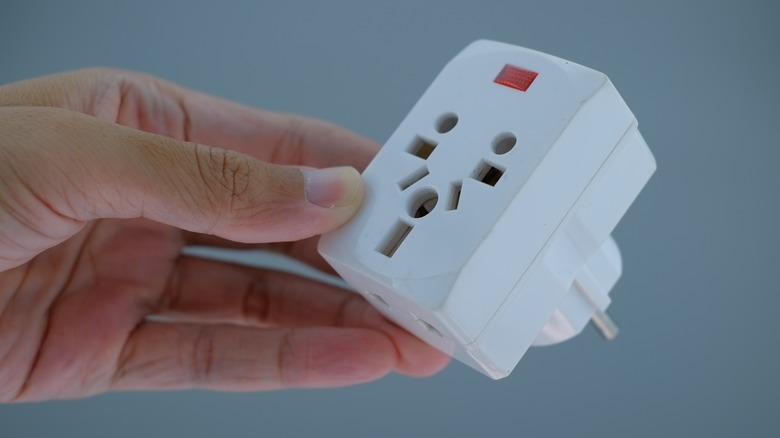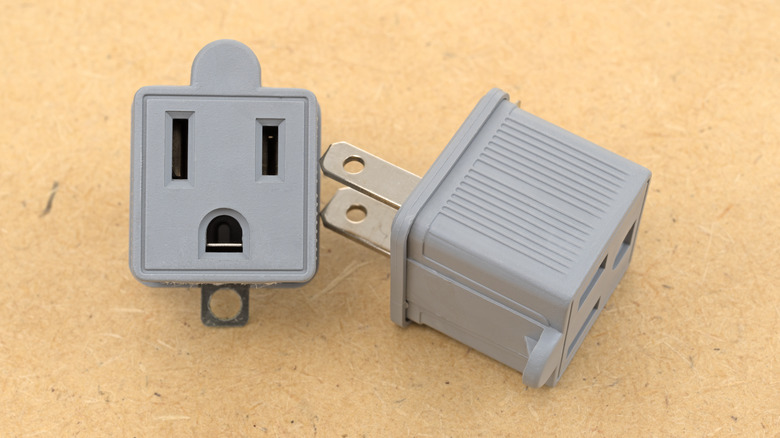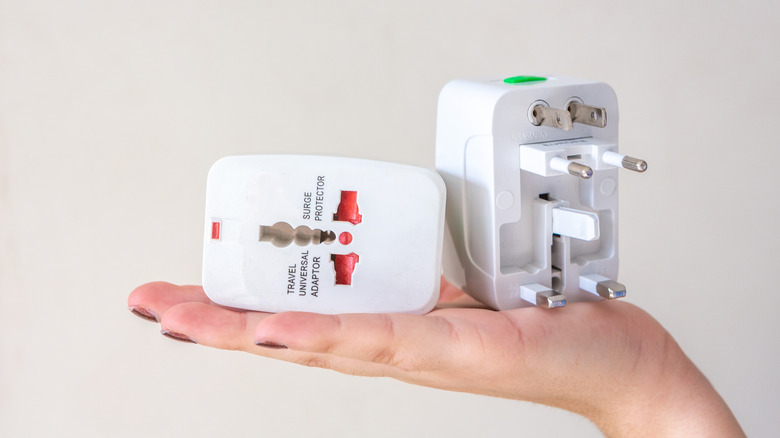Why You Should Avoid Using Plug Adapters
Whether you're frequently traveling to different continents or need to plug a 3-prong plug into a 2-prong outlet, plug adapters can feel like a lifesaver. After all, there's nothing more frustrating than having to buy a whole new set of chargers every time that you go on vacation, or worse, finding that your beloved new appliance simply won't plug into the wall and is now an oversized, overpriced paperweight.
Between some stores' strict return policies that prevent returns once you've opened the box — never mind the fact that you may need to open the box to see the plug type — and what, according to Forbes, is sky-high inflation throughout America and Europe (making it difficult to shoulder unexpected costs), plug adapters can definitely be a tempting solution to electric woes. Unfortunately, though, while they have an impressive promise — allow any given plug to work in whatever outlet you'd like — things don't always work out so well. Many plug adapters just aren't as safe as manufacturers claim.
Plug adapters bypass safety features
Generally speaking, modern homes are set up to minimize harm in case of a power surge or any other unexpected power situations. According to Landmark Home Warranty, the bottom hole in a North American outlet is a grounding path; essentially, it provides a path for any extra electricity in case something malfunctions — otherwise, you could get a shock, and the device that's plugged in could be ruined. Plugs with all three prongs take advantage of this grounding system, whereas plugs with only two prongs do not, leaving you and your devices in harm's way.
If you're planning on using a plug adapter so that your three-prong plug will fit into an outlet with two prong holes, you'll still be able to draw power from the outlet as normal. But according to RSB Electrical, if something goes awry, you won't be able to take advantage of the plug's grounding feature. So one unlucky power surge later, you may have to replace your device.
Travel adapters aren't always ideal, either
While a universal travel adapter probably feels like a no-brainer if you're traveling to a country with a different outlet design, you'll still want to double-check your devices' voltage requirements before you go. The adapter may make it possible to physically plug a device into the wall, but it doesn't guarantee that everything will work as intended.
Depending on where your travels take you, you may find yourself in a part of the world with outlets that supply different volts, which is essentially the speed of energy. According to Volt Converter, if your outlet supplies more voltage than your device can handle, using it could blow the fuse, fry your device, or worse. On the other hand, if it doesn't supply enough voltage, your device will barely work. While travel adapters don't necessarily exacerbate this problem, they can give you a false sense of security that everything will be alright, potentially leading to electrical nightmares.
Luckily, lots of devices support other countries' voltage requirements — and you can usually check pretty easily, as this information is generally printed on the back/bottom of the device or attached to the cord. According to World Standards, if the device says that it supports 100-240 volts (sometimes printed as "INPUT: 100-240 V"), it's relatively safe to use with an adapter — though you should still keep the above safety concerns in mind. If the input range does not match your destination's outlet voltage, you're probably better off leaving your device at home.


